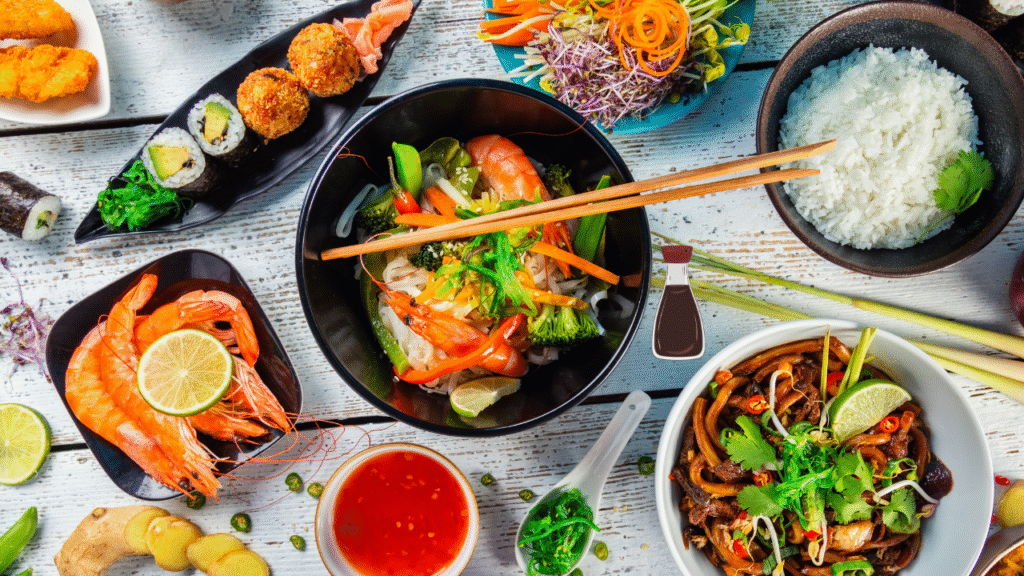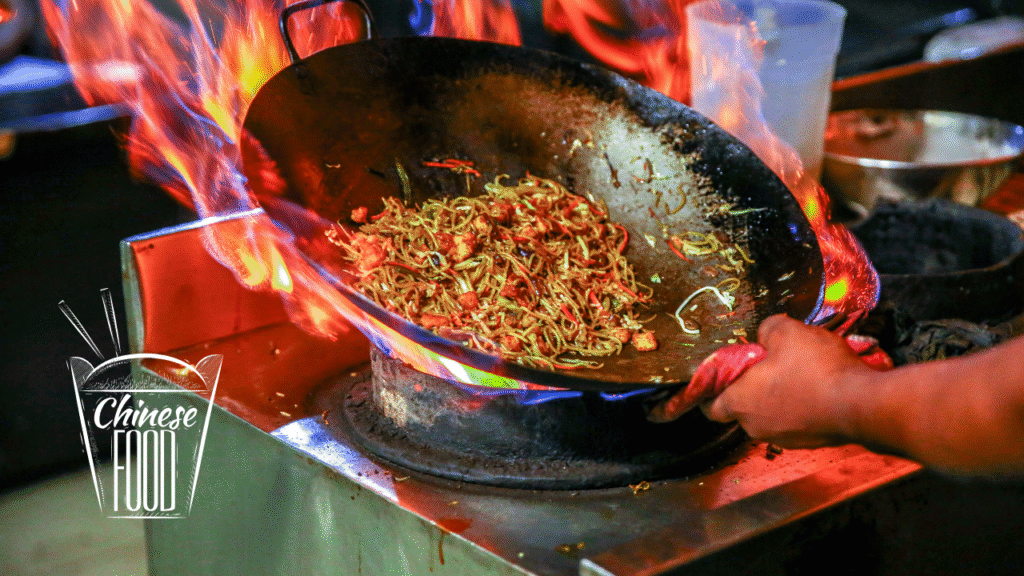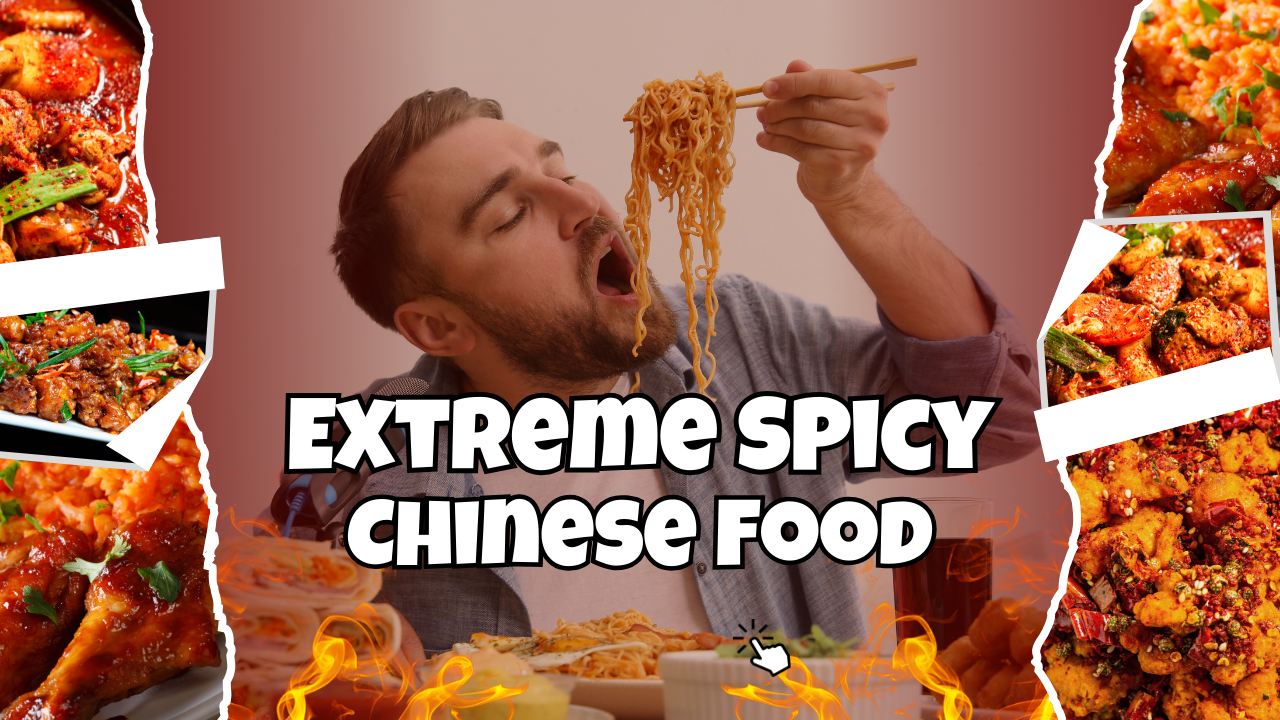Table of Contents
When you give an order of Chinese takeout, it most probably includes one of the famous dishes. Well, news for you! General Tso’s Chicken or beef with broccoli aren’t typically eaten in China at all. These are westernised cuisines to suit the taste of their locals. Sweeter sauces, deep-fried textures, and milder spices are adaptive versions of Chinese cuisine. You will be surprised to hear how some very well-known and loved dishes actually did not originate in China.
One of the foods that is an Americanized version is Chop Suey. Surprised? Yes, it was created in the United States, not China. Similarly, modern egg rolls are also native to the US. China does prefer spring rolls, but these oversized, deep-fried egg rolls are a Western invention. Cream cheese is also not very widely used in Chinese kitchens.
Authentic Chinese cuisine is the yin and yang of balance. Where taste, freshness and ingredients are balanced perfectly to create an amazing mouth-watering taste. A food where ingredients uplift and neutralise each other’s flavours at the same time. It’s an alchemy of tastes. Western versions lack this magic.
The Real Chinese Food
If you are a traveller, it doesn’t matter where you are going, understanding the basics of Chinese cuisine will help you order better food. The taste palette of China is more like a regional division. There are 8 major regions in terms of flavour palette. Each region has its own ingredients, techniques, and flavour profiles that contribute to its food taste. Some famous ones are

Sichuan Cuisine
This cuisine uses Sichuan pepper. These are very hot and peppery. The food is spicy and numbing to your tongue. Mapo tofu, Chongqing hotpot, and twice-cooked pork belong to Sichuan region dishes. The bold, hot flavour gives a tingling sensation to the tongue.
Cantonese Cuisine
This food range has fresh and more delicate flavours. For example, steamed fish, dim sum or char siu pork. These use minimal seasoning, give a fresh taste and focus on subtle flavours. So if you are a foodie who wants to devour every bite, Cantonese is your type!
Hunan Cuisine
For spicy lovers, Hunan cuisine is another choice. This food is more oily and smokier than the Sichuan. Hunan chilli fish and Chairman Mao’s red pork are some famous and loved dishes.
Shanghai Cuisine
These foods use sweet soy sauces, wines, and have a complex umami flavour. Their taste is usually sweet and rich. Soup dumplings are the most common dish in this group.
Now you have a good understanding of different food tastes across China. We bet you can taste and tell its origin. So when you are travelling and want to order Chinese, ask for their signature regional dishes and you will instantly know what type of food to expect.
Dishes You’ve Probably Never Heard Of (But Should Try)
Most people don’t go beyond their traditional orders. And to be honest, Chinese food is so yummy that it keeps you addicted and hooked to the same taste again and again. But you should bring out your adventurous side and try some cuisines that can burst your taste buds with cultural richness.
We suggest trying
- Cold skin noodles that are made with wheat or rice and other ingredients include chilli oil, vinegar and garlic. These noodles are also called liangpi. You will see them almost in every other social media food video.
- Try Guo Bao Rou, which is a sweet and sour pork dish from Northeast China. It has a light, crisp batter and a tangy bite to it. Simply delicious.
- Order fermented tofu that has an odour to it, but is very delicious. They are crispy on the outside and creamy on the inside.
- Century eggs are another must-try dish. Duck or Quail eggs are preserved in vinegar and sauces. The liquids seep through and give the eggs a jelly-like texture and complex umami flavour.
- Yunnan Mushroom Hot Pot, which is wild mushrooms served in an earthy broth with chilli and herbs.
How to Order Like a Local (And Avoid the Tourist Menu)
Being a tourist, the best thing you can do is to avoid ordering like a tourist. That’s the way you secure an authentic Chinese experience for yourself. Always go to the place where locals prefer to go. You can even learn a few key phrases in Chinese to make your order more “pro local”. You can ask them about their speciality and even about the intensity of the spices. Here are a few Chinese phrases that can help you order better.

- “What is your specialty?” 你们的特色菜是什么? (Nǐmen de tèsè cài shì shénme?) or
- “Not too spicy, please.” 请不要太辣。(Qǐng búyào tài là.)
Also, try using Google Lens to translate Chinese menus into English. Because English menus may not have adventurous dishes that only locals understand. Moreover, if you are ordering a takeaway, use Chinese food apps. English menus may not have adventurous dishes that only locals can understand. Moreover, if you are ordering a takeaway, use Chinese apps.
Where to Experience Authentic Chinese Outside of China?
Not in China? That’s ok. You can still have your share of authentic food.
If you travel to any of these destinations, you can have your favourite authentic flavours.
- Vancouver, Canada, is known for authentic dim sum and Cantonese seafood
- Melbourne, Australia, offers everything from Szechuan to Shanghainese.
- San Francisco, USA, has a historic Chinatown and modern Chinese fusion.
- Bangkok, Thailand, has rich Teochew and Cantonese influences.
When you go to any outlet outside China, look for regional names on the storefront board. This will give you an idea of what kind of food is served there.
Some Fun Facts About Chinese Cuisine
- The famous fortune cookies had nothing to do with China. They are US inventions.
- Most people think of soy sauce as a basic ingredient in their food, but there are other sauces too. Like oyster sauce, Worcestershire Sauce, and wine.
- Eating with chopsticks is like a sacred tradition in China. They mind it when you use spoons. However, the chopsticks were originally invented and used for cooking. Oops!
- The famous Chinese rice was originally made to use leftovers. It’s a dish born out of thrift, not indulgence.
- In China, people eat sweet soups or fruits. There is no traditional concept of dessert. Maybe that’s why they are healthier than us. Sugar kills, fellas!
- The most expensive delicacy is “bird nest soup”, made from nests of swiftlet birds. It can cost you hundreds of dollars per bowl.
- Pebble soup might be an interesting street dish to try.
- The most bizarre dish is virgin eggs made in the urine of virgin boys, and they are eaten as a ritual.
Conclusion:
You don’t need to go to China to experience authentic Chinese food. Have an understanding of how they develop their taste through ingredients and order like a pro. Try food for adventure rather than going for traditional orders. Bust the myths about their cuisine and try something new. The real Chinese flavours are bold, balanced and kicking. Along the journey to explore their cuisines, you can find some interesting yet bizarre dishes too.


